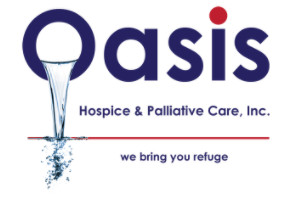What is COPD? (Chronic Obstructive Pulmonary Disease)
Inflammatory lung diseases such as chronic obstructive pulmonary disease (COPD), which causes restricted airflow from the lungs, are considered to be the most serious. Breathing difficulties, coughing, mucus (sputum) production, and wheezing are all common symptoms. Long-term exposure to irritating gases or particulate matter, the majority of which comes from cigarette smoke, is the most common cause. Those who suffer from COPD are at a greater risk of getting heart disease, lung cancer, and a range of other health problems.
COPD is caused by a number of different illnesses, the most prevalent of which are emphysema and chronic bronchitis. These two disorders are typically associated with COPD and can manifest themselves in varying degrees of severity among those suffering from the disease.
Chronical bronchitis (also known as chronic lung inflammation) is an inflammation of the lining of the bronchial tubes, which are responsible for transporting air into and out of the lung’s air sacs (alveoli). It is characterized by frequent coughing and the production of mucus (sputum).
Emphysema is a lung disease in which the alveoli at the end of the lungs’ tiniest air passageways (bronchioles) are destroyed as a result of prolonged exposure to cigarette smoke and other irritating gases and particulate matter. Emphysema is a chronic lung disease that affects the lungs’ alveoli.
Despite the fact that COPD is a progressive disease that worsens with time, COPD is curable if caught early. Most patients with COPD can obtain good symptom control and a high quality of life, as well as a reduced chance of developing other related illnesses, provided they receive effective treatment.
The majority of people with COPD are at least 40 years old and have a history of smoking. The longer and more tobacco products you smoke, the more likely you are to develop COPD. COPD can be caused by cigarette smoke, cigar smoke, pipe smoke, and secondhand smoke, in addition to cigarette smoke. If you have asthma and smoke, your chances of developing COPD are even higher.
Symptoms of COPD
COPD symptoms frequently do not manifest themselves until extensive lung damage has occurred, and they progressively worsen over time, particularly if smoking exposure continues to be a factor.
The following are examples of signs and symptoms of COPD:
- Shortness of breath, especially when participating in strenuous physical activity
- Wheezing
- Tightness in the chest
- A chronic cough that may result in the production of mucus (sputum) that is clear, white, yellow, or greenish in color.
- Respiratory infections on a regular basis
- Insufficiency of energy
- Weight loss that was not expected (in later stages)
- Swelling of the ankles, foot, and legs
People with COPD are also more likely to undergo episodes known as exacerbations, during which their symptoms worsen and last longer than the normal day-to-day variation. Exacerbations can last for several days or more in certain cases.
What Causes COPD? – Other reasons and Symptoms
COPD can also develop if you are exposed to chemicals and fumes at work. COPD can also be caused by long-term exposure to air pollution and inhaling dust.
Along with tobacco smoke, homes in developing countries are frequently poorly ventilated, forcing families to breathe fumes from burning fuel used for cooking and heating.
There could be a genetic predisposition to COPD. Up to 5% of people with COPD have a protein deficiency known as the alpha-1-antitrypsin deficiency. This deficiency wreaks havoc on the lungs and can also harm the liver. Other associated genetic factors may also be at work.
Lung and Health Impact of COPD
Through two huge tubes, air goes down your windpipe (trachea) and into your lungs before exiting your body (bronchi). They divide numerous times within your lungs, like the branches of a tree, into many smaller tubes (bronchioles), which in turn terminate in clusters of tiny air sac-like structures called alveoli (alveoli).
The air sacs have extremely thin walls that are packed with small blood arteries (capillaries). Air that you breathe flows through these blood arteries and into your circulation, providing you with oxygen. At the same time, carbon dioxide is exhaled, which is a gas that is produced as a waste product of metabolism.
As you breathe, the bronchial tubes and air sacs in your lungs stretch and contract naturally, allowing air to escape your body. It is caused by COPD that the air sacs in your lungs lose their flexibility and overexpand, which results in some air being trapped in your lungs when you exhale.
COPD Diagnosis
COPD cannot be diagnosed with a single test. Symptoms, a physical exam, and diagnostic test results are used to make a diagnosis.
When you go to the doctor, make sure to tell him or her about all of your symptoms. Inform your doctor if:
- You smoke or have previously smoked;
- You are exposed to lung irritants on the job;
- You are exposed to a lot of secondhand smoke;
- You have a family history of COPD; you have asthma or other respiratory conditions;
- You take over-the-counter or prescription medications.
Examinations and tests for COPD
During the physical exam, your doctor will listen to your lungs as you breathe with a stethoscope. Your doctor may order some of the following tests based on all of this information to get a more complete picture:
- Spirometry is a noninvasive lung function test. You will take a deep breath and then blow into a tube connected to the spirometer during the test.
- Imaging tests, such as a chest X-ray or CT scan These images can give you a close-up view of your lungs, blood vessels, and heart.
- An arterial blood gas analysis. This entails drawing blood from an artery and measuring your blood oxygen, carbon dioxide, and other vital levels.
These tests can help determine whether you have COPD or another condition like asthma, restrictive lung disease, or heart failure.
What Causes Prevention of COPD?
Like many diseases, COPD has a clear origin as well as an obvious road to prevention, and there are methods for slowing the advancement of the condition, unlike some others. The vast majority of COPD cases are directly tied to cigarette smoking, and the most effective approach to avoid COPD is to never smoke — or to quit smoking immediately — cigarettes.
If you’ve been a smoker for a long time, these straightforward assertions may not seem so straightforward, especially if you’ve tried to quit previously – once, twice, or numerous times. But don’t give up trying to quit. Identifying a smoke cessation program that can assist you in quitting for good is essential for success. It’s your greatest bet for preventing lung damage in the first place.
Another risk factor for COPD is exposure to chemical fumes and dusts at work, which can occur in a variety of settings. Working around these sorts of lung irritants? Consult with your supervisor about the best ways to protect yourself, such as wearing respiratory protection equipment (RPE).
Some measures you can take to assist reduce issues linked with COPD are as follows:
By quitting smoking, you can lower your risk of developing heart disease and lung cancer.
Annual flu vaccinations and regular vaccinations against pneumococcal pneumonia are recommended to minimize your risk of illness and perhaps prevent some diseases.
Consult your doctor if you are feeling down or helpless, or if you believe you may be suffering from depression.
When to Consult a Doctor (or Clinic) for COPD
Consult your doctor if your symptoms are not improving or are getting worse despite therapy, or if you discover signs of an infection, such as a fever or a change in the consistency of your sputum.
You should seek immediate medical attention if you are having difficulty breathing, if you have severe blueness of your lips or fingernail beds (cyanosis), if your heart is racing, or if you are feeling foggy and having difficulty concentrating.
If you or your elderly loved one is struggling with chronic obstructive pulmonary disease , contact a COPD specialist at Oasis Hospice and Palliative Care at (708) 564-4838 and get the pain relief you deserve.
https://g.page/oasis-hospice-care-of-chicago?share

